8 stages of baby walking
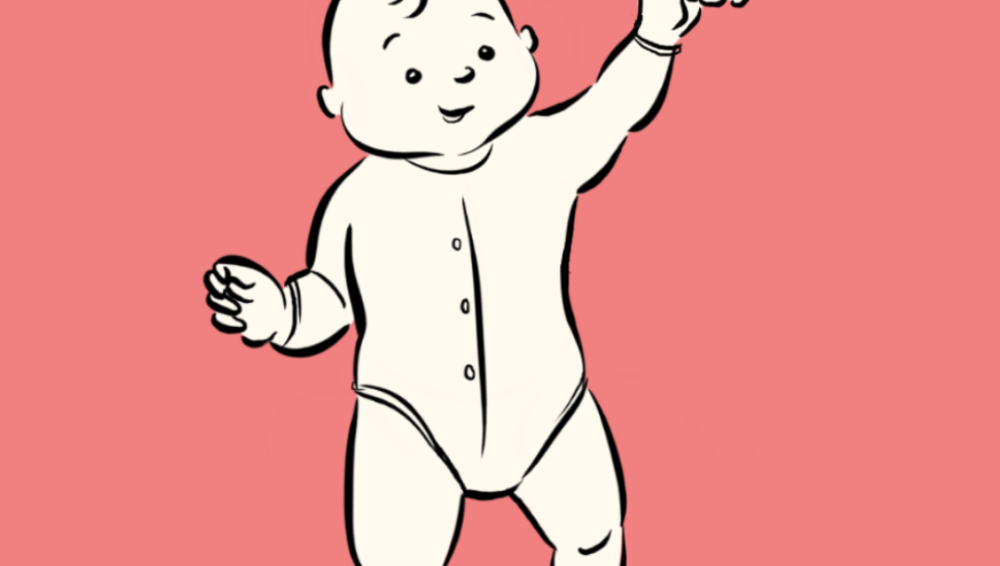
Walking is one of the most exciting developmental milestones, and Your Child will probably start to walk at around 10 to 18 months. However, walking happens in stages and is the result of a gradual and steady development from the earlier stages.
You can help Your Child take those exciting first steps on time by encouraging the little one to accomplish earlier milestones during the prior months. It is during those pre-walking milestones — sitting, crawling, pulling up, standing, and cruising — that’ll let Your Child build the strength and balance required for walking.
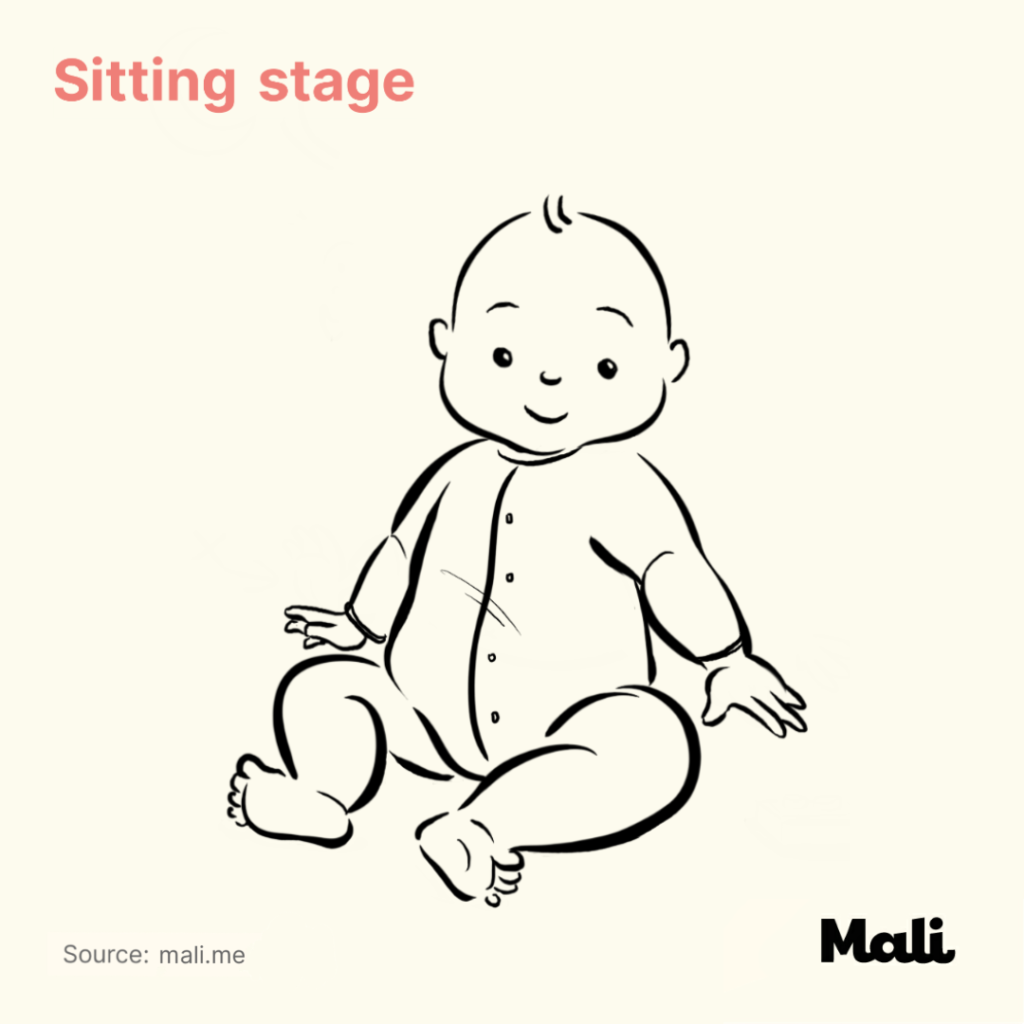
Sitting stage: Sitting is a milestone that babies attain when they are between 4 and 7 months old. Sitting upright helps Your Child strengthen the trunk muscles, which is essential for maintaining balance when walking. When Your Child begins to sit without support, your baby is already in the first stage of developing mobility skills.
You can help Your Child sit unsupported through consistent practice. When Your Child turns 4 months old, practice sitting on a daily basis. Encourage your little one to play while sitting — you can roll a ball back and forth or place a toy at a position where the little one needs to stretch before getting it.
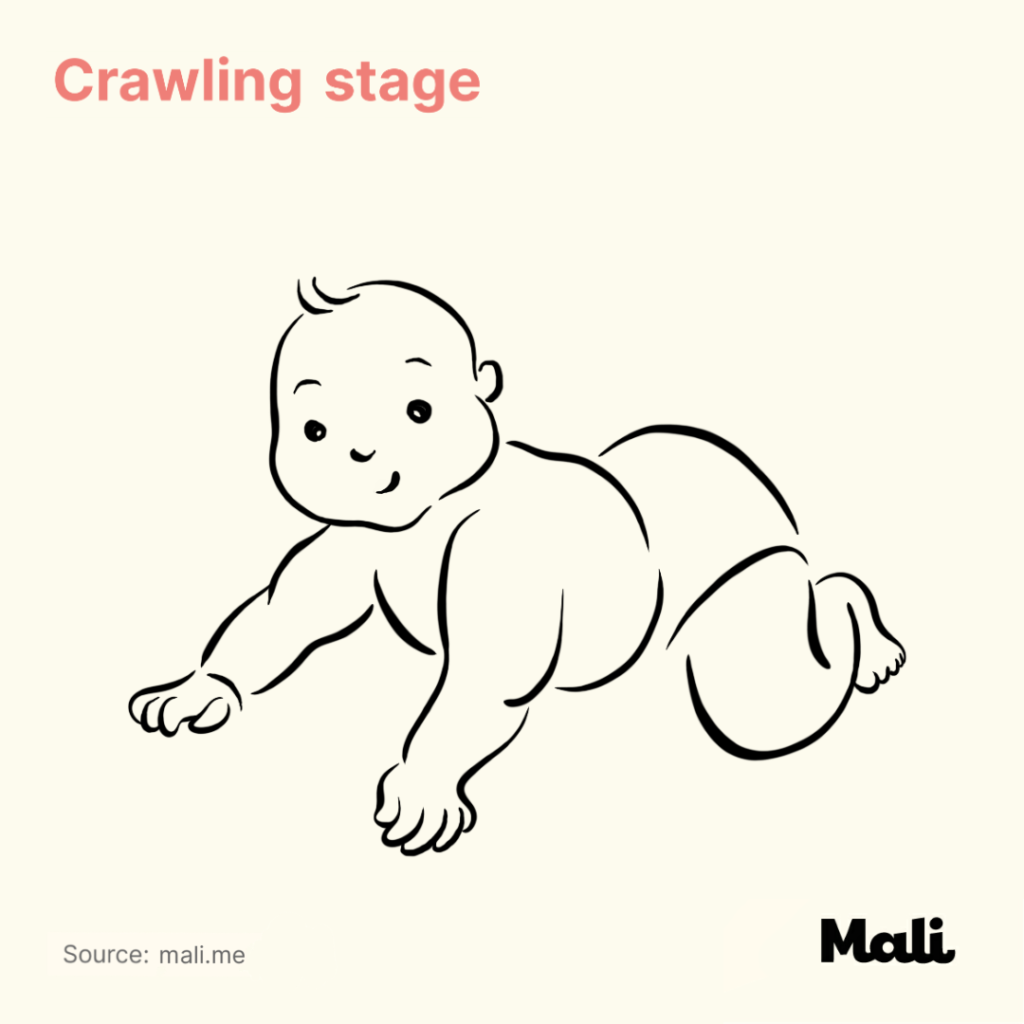
Crawling stage: The second stage in building strength to walk is crawling. Babies normally start crawling between 6 and 10 months of age. During this stage, Your Child is using both the arms and legs to move, so both sets of limbs are learning how to bear weight. This strengthens the muscles of the arms and legs and helps Your Child gain the mobility and balancing skills needed for walking.
To help Your Child learn to crawl, start giving your little one tummy time early enough. You can also encourage Your Child by placing toys some distance away so that Your Child will be prompted to go and get them.
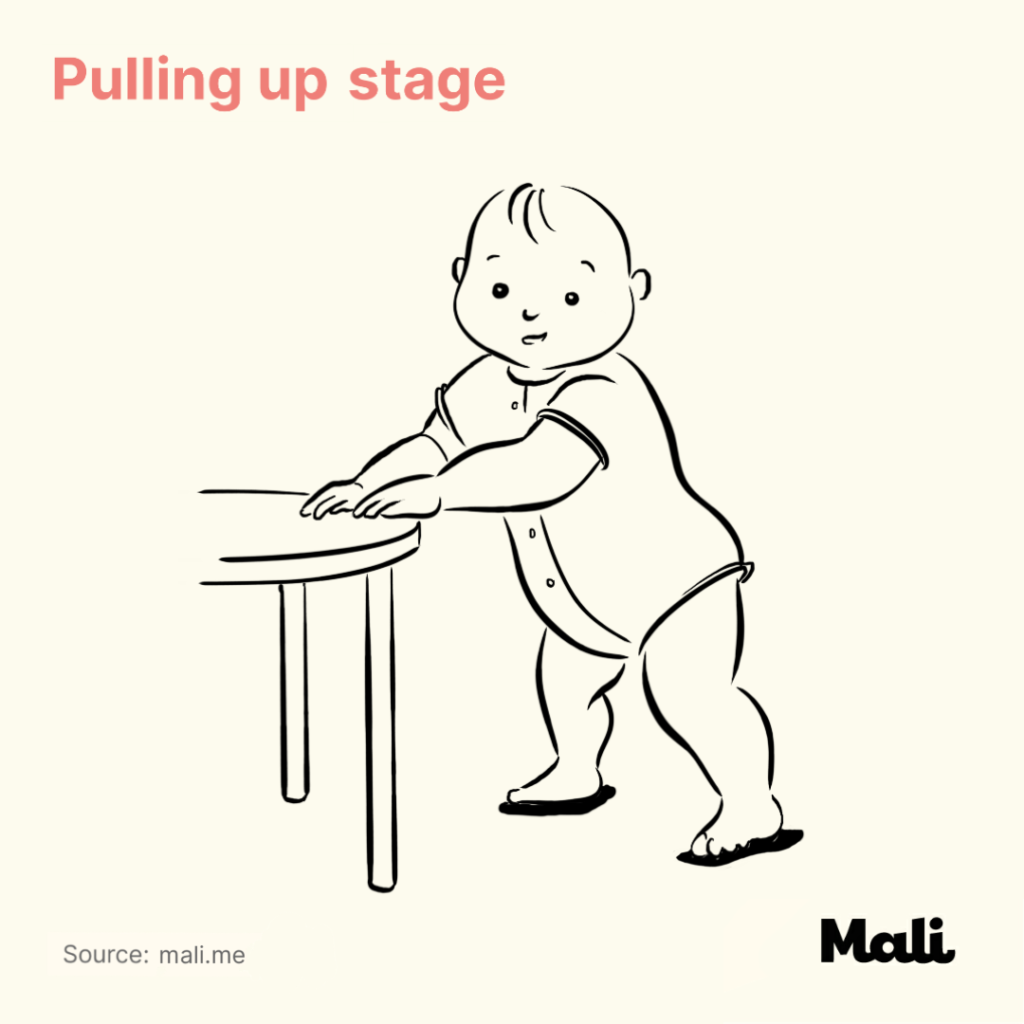
Pulling up stage: As Your Child’s muscles get strong, your baby becomes more curious and audacious. Around 8 months of age, Your Child starts to pull up to a standing position with assistance from mom, dad, other people, or furniture. These attempts to stand will help Your Child strengthen the leg muscles and develop the ability to balance.
One thing you can do at this stage is to help Your Child become familiar with the standing position and gain balancing skills. You can also help your little one learn how to bend the knees when trying to get back down to the floor so as to prevent falls.

Cruising stage: With time, Your Child starts gaining confidence in pulling up with support and attempting to move around with the help of furniture, walls, or your body. This movement is known as cruising, and it normally happens between 8 and 10 months. It helps the baby to learn how to move the legs when standing.
As Your Child is getting more mobile, make sure your home is safe. Pad your floors to prevent hard falls and secure all furniture that Your Child might be pushing around. You can encourage your baby to let go of the wall or furniture by offering your hand a little distance away so Your Child will attempt to take your hand.

Standing without support: At this stage, Your Child is able to stand without the help of any support. This milestone normally occurs between 9 and 12 months and is a very important period for building balance. The ability to coordinate the hip, knee, and ankle joints without support is a key skill needed for walking.
To help your baby master the balancing skills, sing and clap for Your Child when standing. Note how long your little one stays up in each standing attempt and aim for more the next time. Praise and encourage Your Child after each attempt. Don’t worry too much if Your Child falls. Falling is part of the learning process and is beneficial for skill development.
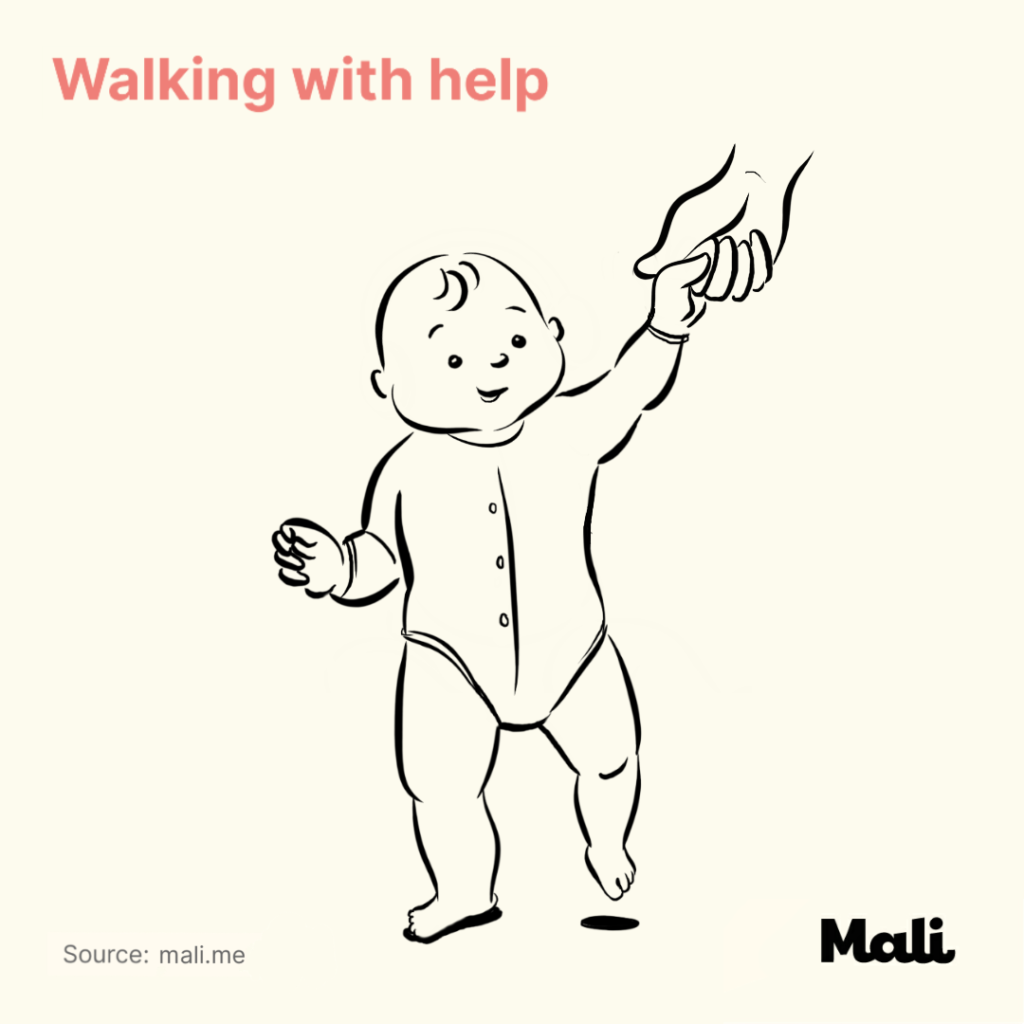
Walking with help: When Your Child becomes comfortable standing on both legs without support, encourage your little one to take a few steps. Walking involves maintaining balance on one leg while moving the other. At this stage, Your Child may need help with single-leg balance.
You can hold your little one’s hand while walking around a small area together. Another option is to get Your Child a push toy, such as a mini shopping cart. Pushing the cart around is a fun activity that will help Your Child develop walking skills. Do not get a baby walker – they are counterproductive and will delay walking.
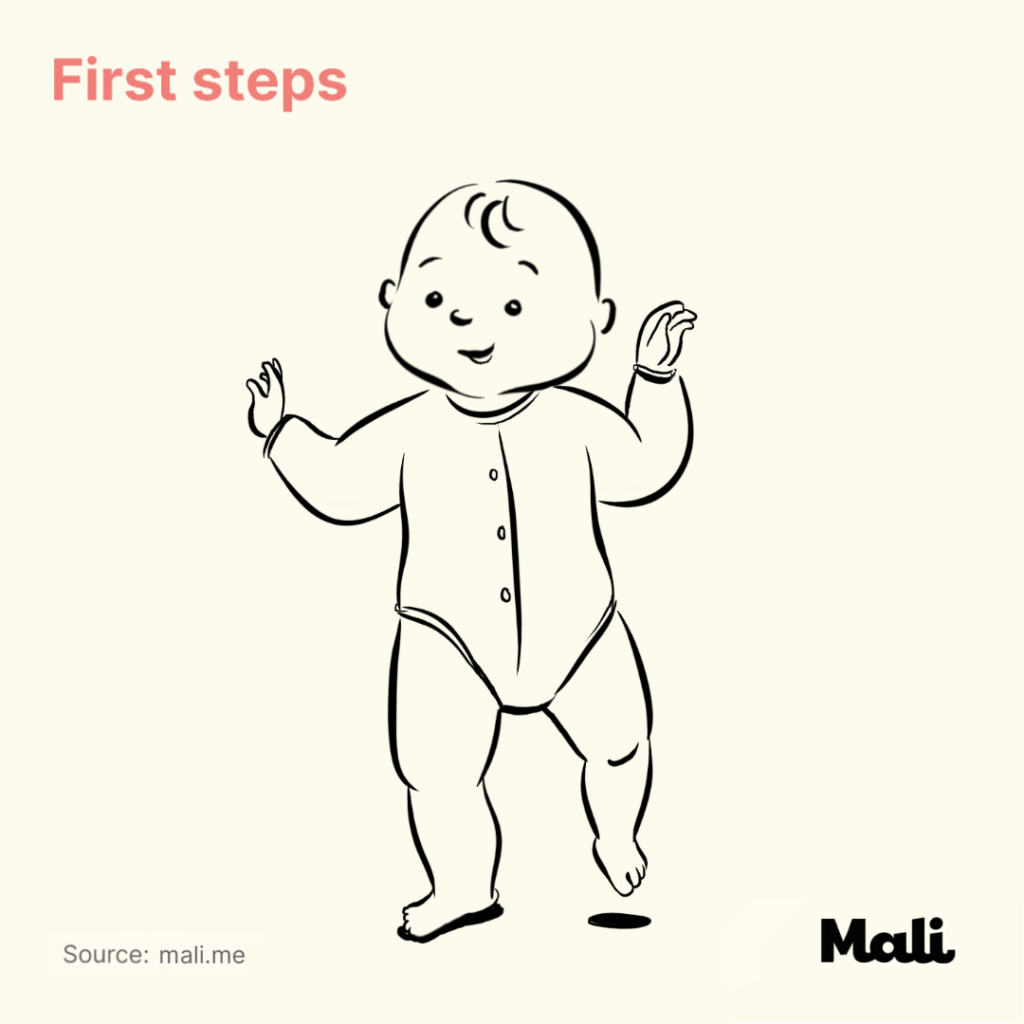
First steps: Successfully taking those first steps is an exciting moment for everyone, so build Your Child the confidence to do it. Encourage Your Child to let go of fear and make an attempt. One of the things you can do is to temporarily remove your hand when you’re walking together and see if Your Child can continue walking.
You can also dangle a toy in front of your little one when standing and see if Your Child is eager to move towards it. Praise your baby in a high-pitched, upbeat voice every time they make an attempt.
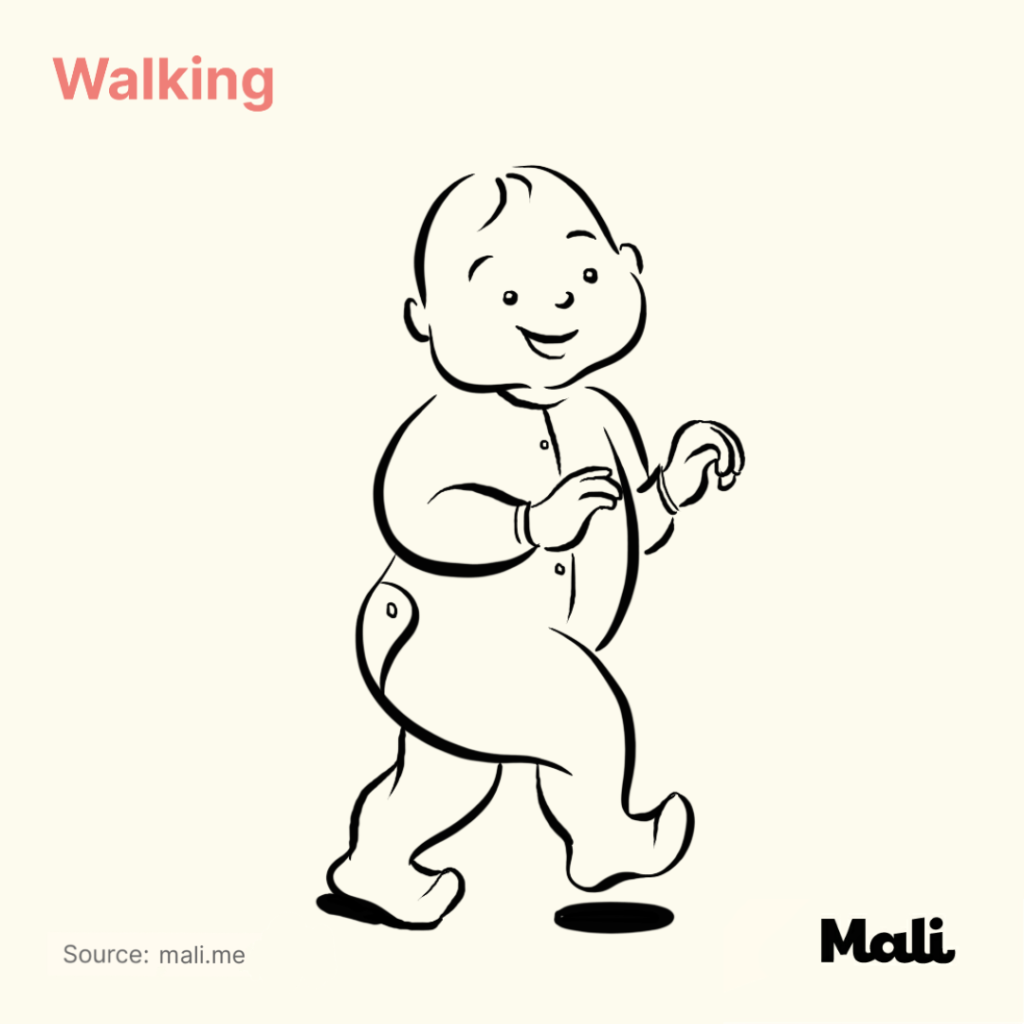
Walking: Your Child may have to stumble a few times before mastering the walk. Keep encouraging your baby until walking (not crawling) becomes the default means of moving from one place to another.
Squeaky shoes can get Your Child to be interested in walking by arousing Your Child’s curiosity and act as an incentive for your little one to walk more often. Plus, you’ll always know where they are.
Why walkers don’t support walking
Contrary to their name, studies have found that walkers can delay a baby’s motor development and cause back problems. They can also be dangerous, as they are prone to tipping over. Countries such as Canada have already banned the use of walkers, and the American Academy of Pediatrics (AAP) discourages using the product. Do Your Child a big favor and skip the walker!
Verified:
Dr. Prapasri Nuntnarumit (Developmental psychologist) (31 March 2021)



